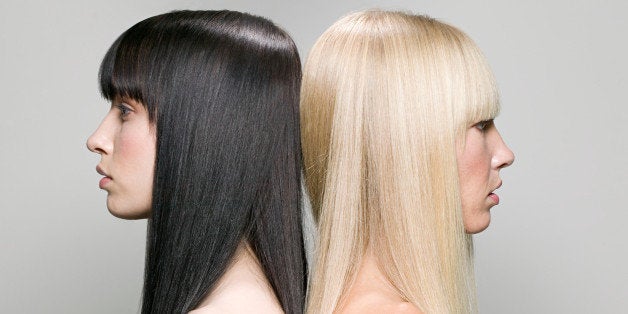
For all those brunettes wishing they were naturally blond, a small genetic change could have made all the difference. Scientists have found that replacing one of DNA’s four letters at a key spot in the genome shifts a particular gene’s activity and leads to fairer hair. Not only does the work provide a molecular basis for flaxen locks, but it also demonstrates how changes in segments of DNA that control genes, not just changes in genes themselves, are important to what an organism looks like.
“It really is a nice story that pulls together and helps make sense of a lot of the biology that we have partially understood up to this point,” says Richard Sturm, a molecular geneticist at the University of Queensland in Brisbane, Australia, who was not involved with the work.
Because our appearance is so strongly influenced by the color of our skin and hair, geneticists have long sought to understand the genetic bases of these traits and when they evolved. Over the past 6 years, studies of genetic variation in thousands of people have linked at least eight DNA regions to blondness based on the fact that a certain DNA letter, or base, was found in people with that hair color but not in people with other hair colors. Some of those base changes, or single-nucleotide polymorphisms (SNPs), were in genes involved in the production of pigments, such as melanin. Mutations in these genes typically change skin and hair color. Other SNPs lay outside genes but could be part of the regulatory DNA that helps control the function of genes nearby. Changes in that regulatory DNA could result in hair color but not skin color change, or vice versa, because regulatory DNA can change gene activity in just certain parts of the body.
In northern Europeans, the closest gene to an SNP that was strongly linked to blondness was KITLG, which codes for a protein that is key to making sure cells go to their proper places in the body and specialize accordingly. That SNP caught the eye of David Kingsley, an evolutionary geneticist at Stanford University in California. He and his colleagues had found that this gene was key to altering the coloration of fish called sticklebacks that had become isolated in freshwater rivers and lakes when glaciers receded. In each freshwater location, these fish were evolving independently, yet time and time again, changes in the regulation of this gene led to fairer or darker skin, depending on the murkiness of the water. “We had a choice,” Kingsley recalls. “We could study skin color in fish or in humans—it was the very same problem in the very same gene.”
To learn whether that SNP was part of the regulatory DNA for human KITGL, Kingsley’s team turned to mice. The researchers knew they were on the right track because mice with DNA that’s backward in that region were lighter or even white, instead of the usual brown. They made two variations of the human version of that DNA to put into mice. In one variant, they left the blond-generating SNP intact; and in the other variant, they changed that SNP to another base, so that the DNA looked like it does in brunettes. They inserted just one copy of one DNA variant into each mouse.
Mice with the blond-generating SNP were lighter than mice with the other variant, Kingsley and his colleagues report online today in Nature Genetics. When he and his colleagues studied this regulatory DNA in human cells grown in a laboratory dish, they discovered that the blond-generating SNP reduced KITLG activity by only about 20%. Yet that was enough to change the hair color. “This isn’t a ‘turn the switch off,’ ” Kingsley says. “It’s a ‘turn the switch down.’ ”
“This study provides solid evidence” that this switch regulates the expression of KITLG in developing hair follicles," says Fan Liu, a genetic epidemiologist at Erasmus MC in Rotterdam, the Netherlands, who was not involved with the work. He and his colleagues have found they can predict red and black color pretty accurately based on looking at 22 hair-color-related SNPs that a person has, but distinguishing blonds and brunettes is “much more difficult,” he says.
“Regulatory DNA is very likely to play an important role in pigmentation in general,” adds Eiríkur Steingrímsson, a molecular biologist at the University of Iceland, Reykjavik, who was not involved with the work.
Blond hair may not be important to survival, but the story of one of its genetic causes helps clarify how evolution can occur. KITLG is active in many places in the body, and any mutation in the gene itself would result in widespread problems in the body and even death. Yet it is bracketed by sections of regulatory DNA, any one of which may take control in a different tissue. “This finding explains why the effect of KITLG is specific to hair but not eye and skin, which is quite unique compared to most other pigmentation genes known today,” Liu says. Thus, the change that led to blond hair did not affect the gene elsewhere in the body. “It’s literally only skin deep,” Kingsley says.
Original article:
This story has been provided by AAAS, the non-profit science society, and its international journal, Science.
